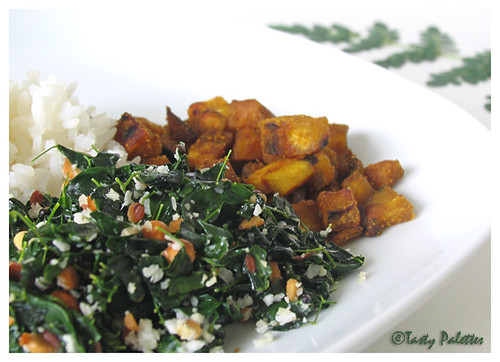Vegetarian Dumplings
Dumplings – “are either made from balls of dough or are small parcels of food encased in pastry, dough, batter, or leaves”, says Wiki. Although dumplings are found in many cuisines, it is those oriental varieties that first comes to my mind. Availability of ready-made dumpling wrappers like wonton, gyoza has also prompted home-cooks like to me to experiment with them. Traditionally, gyoza wrappers, which are thicker, are used for dumplings, while wonton wrappers are used in soups or broth. But these dumplings are made with wonton wrappers, which are more readily available in many super markets. For information on other food wrappers, see here.
This recipe is a regular in my house, not only because its tasty, its healthy too. Protein and vegetables, seasoned, wrapped and steamed – what is not to like about them. You can use any steaming apparatus of yr choice, be it a bamboo or metal steamer or the Indian idli plates. I used idli plates.

Ingredients
Wonton wrappers – 1 pack, about 40
Firm tofu – ½ block (1/2 lb)
Carrots – ½ cup, grated
Cabbage – ½ cup, shredded
Red bell pepper – ¼ cup, finely chopped
Scallions – 2, finely chopped
Ginger – 1 tbsp, grated
Lemon grass – 1 tbsp, grated
Soy sauce – 1 tbsp
Worcestershire sauce – 1 tbsp
Sesame oil – 1 tbsp
Egg – 1
Red pepper flakes – 1 tsp
Salt
Pepper
Method
Wrap tofu in a paper towel and squeeze the excess liquid out. Crumble the tofu with a fork into pea sized pieces. Grate ginger and lemon grass finely using a microplane grater/zester.
In a large bowl, combine all the given ingredients, except wonton wrappers. Stir lightly taking care not to mush the mixture.
Take one wonton wrapper, brush the edges of the wrapper lightly with water. Place ½ tsp of the filling in the center of the wrapper. Bring opposite ends together to form a triangle. Press the edges and seal.You can shape the dumpling any way you like. Proceed to make the remaining dumplings.
Coat the steamer’s surface with oil. Place the dumpling in the steamer and steam for 10 to 12 minutes. The wonton wrappers turn translucent and wrinkly once the dumplings get cooked. Remove them from the steamer and repeat process until all the dumplings are cooked. Serve with dipping sauce.
Dipping Sauce
Red wine vinegar – 1 tbsp
Soy sauce – 1 tbsp
Sesame oil – 2 tbsp
Red pepper flakes – a pinch
Scallions – 2, finely chopped
Salt
Pepper
Take all the ingredients in a bowl and whisk to combine.

This is my entry for "Waiter, there's something in my... dumpling!" hosted by Johanna of The Passionate Cook.



























